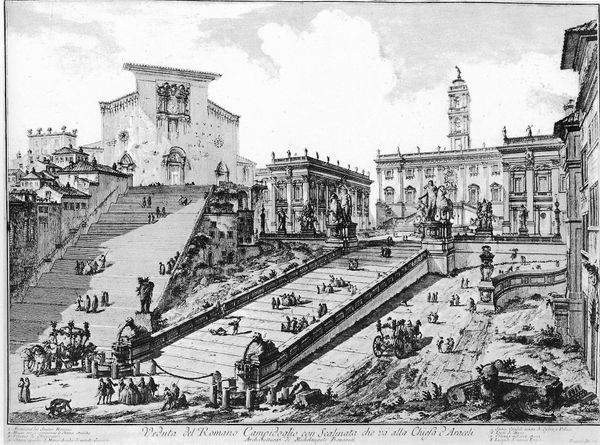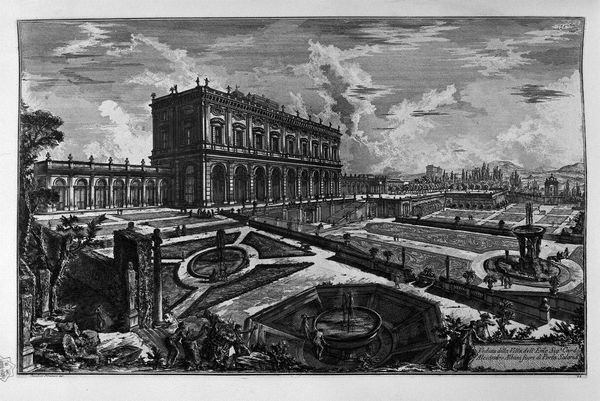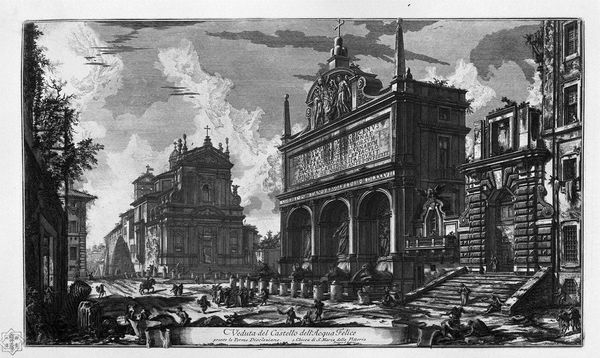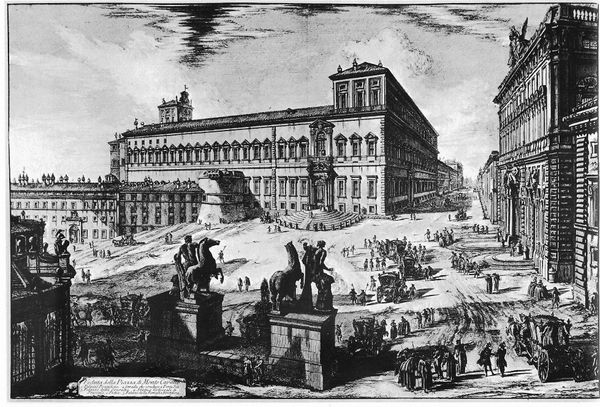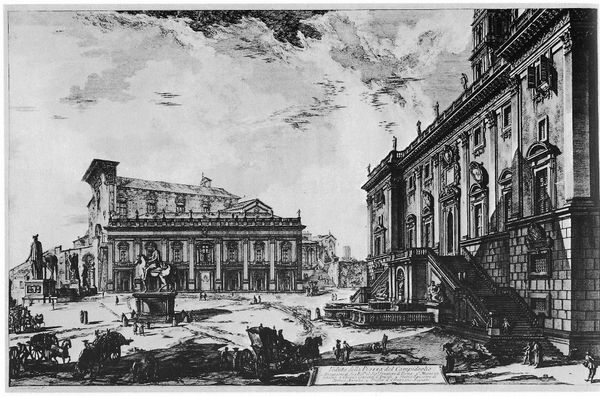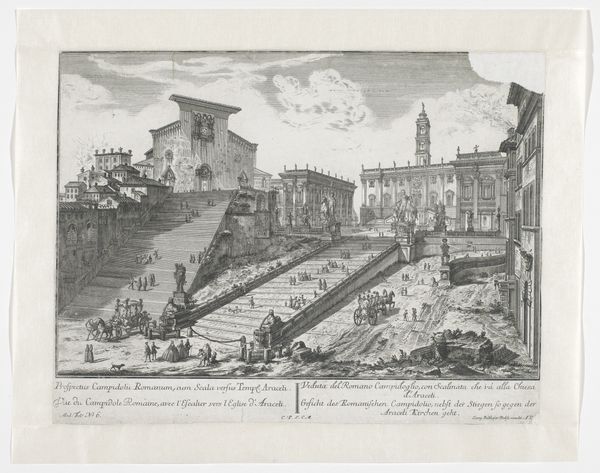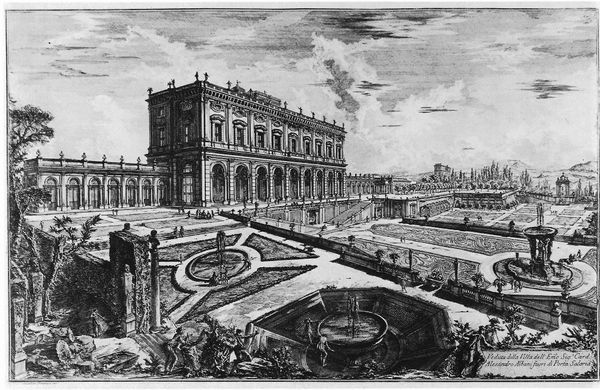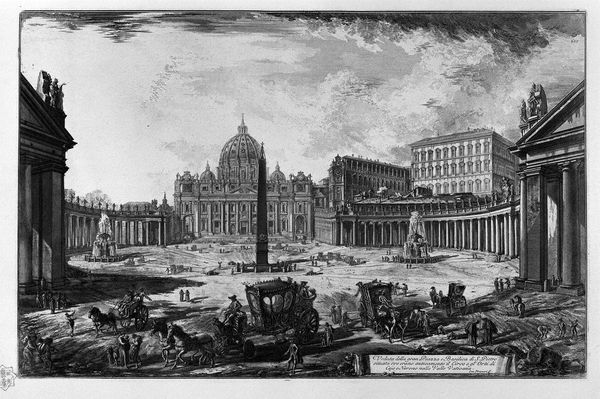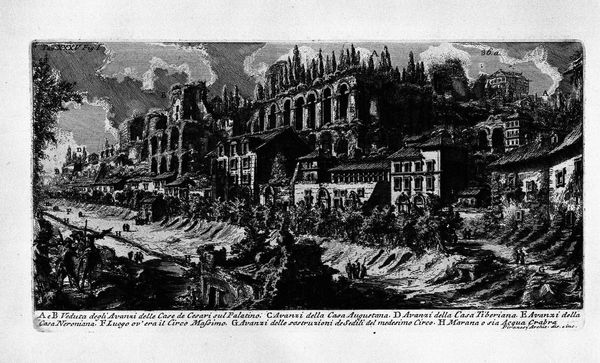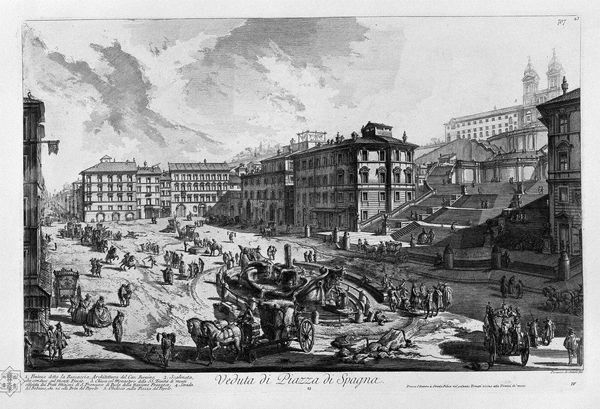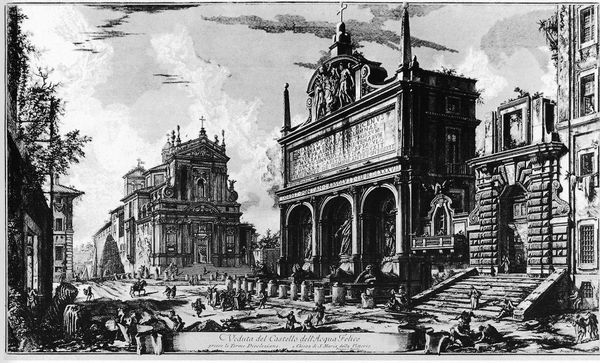
View of the Roman Capitol, with the staircase that goes to the Church of Araceli
0:00
0:00
drawing, print, etching, paper, ink, engraving, architecture
#
drawing
#
baroque
# print
#
etching
#
landscape
#
perspective
#
paper
#
romanesque
#
ink
#
cityscape
#
engraving
#
architecture
Copyright: Public domain
Editor: So, this is Giovanni Battista Piranesi's "View of the Roman Capitol, with the staircase that goes to the Church of Araceli," a print of ink and engraving on paper. There's almost a dizzying depth to the image with these really steep staircases… I’m curious, what jumps out at you when you look at this? Curator: Beyond the impressive architectural rendering, I see a complex layering of power and access. Consider the strategic placement of the church at the summit of those monumental stairs, versus the figures below, navigating the city. What does it mean to visually and physically elevate religious authority in this way? Who is granted easy access, and who must labour to ascend? Editor: That's a great point, about accessibility. I hadn't thought of it that way, but of course, access to power, and specifically here religious power, literally requires climbing. Curator: Precisely! And think about the urban planning aspect. Piranesi is documenting, but he's also implicitly commenting on the socio-political structure embedded within the city’s design. The Roman Capitol, even in Piranesi’s time, was laden with historical and political weight, signifying governance, law, and public life. Do you see how Piranesi uses perspective not just to create depth, but to emphasize this hierarchy? Editor: I do now. The almost exaggerated perspective pushes the buildings up as though they’re rising above the people. How would that reading change depending on when someone viewed the image? Curator: An excellent question! Viewing this today, we bring our contemporary understanding of power dynamics, colonial legacies, and class disparities to the foreground. What was initially perhaps intended as a celebration of Roman grandeur, becomes a site for critical examination of how spaces reinforce existing power structures. Editor: That makes a lot of sense. It shows how historical art continues to speak to our world today and how different audiences have interpreted its meaning. Curator: Exactly! And hopefully invites a re-evaluation of our own built environments and the messages they communicate.
Comments
No comments
Be the first to comment and join the conversation on the ultimate creative platform.
